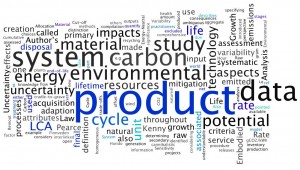
If you are uncertain about “uncertainty” and your understanding of “comprehensiveness” is less than comprehensive you have come to the right page.
Samuel Chapman has created the following glossary to help you get to grips with the key terms in carbon accounting.
The definitions in this glossary have been adopted from ISO (2006) unless otherwise stated. This choice was made due to ISO 2006 being an agreed international methodology for a number of environmental impact categories.
- Potential Environmental impacts – relative expressions, as they are related to the functional unit of a product system. In this case (gram of CO2 per KiloWatt Hour) gCO2/kWh
- Life Cycle – consecutive and interlinked stages of a product system, from raw material acquisition or generation from natural resources to final disposal.
- Life cycle assessment – compilation and evaluation of the inputs, outputs and the potential environmental impacts of a product system throughout its life cycle.
- Carbon assessment – study to address the environmental aspects and potential environmental impacts from associated carbon emissions (e.g. use of resources and the environmental consequences of releases) throughout a product’s life cycle from raw material acquisition through production, use, end-of-life treatment, recycling and final disposal (i.e. cradle-to-grave). Author’s own adaption of LCA definition
- Embodied carbon – the carbon emissions emitted in the creation of any product or service over its lifetime. This is the primary factor in determining the carbon mitigation potential of a technology (Hondo, 2005).
- Embodied Energy – the energy used in the creation of a product or service over its lifetime. Author’s own adaption of above definition. Any others to ref??
- System Boundary – set of criteria specifying which unit processes are part of a product system
- Allocation – partitioning the input or output flows of a process or a product system between the product system under study and one or more other product systems
- Cut-off criteria – specification of the amount of material or energy flow or the level of environmental significance associated with unit processes or product system to be excluded from a study
- Comprehensiveness – LCA considers all attributes or aspects of natural environment, human health and resources. By considering all attributes and aspects within one study in a cross-media perspective, potential trade-offs can be identified and assessed.
- Transparency – open, comprehensive and understandable presentation of information
- Uncertainty Analysis – systematic procedure to quantify the uncertainty introduced in the results of a life cycle inventory analysis due to the cumulative effects of model imprecision, input uncertainty and data variability.
- Sensitivity Analysis – systematic procedures for estimating the effects of the choices made regarding methods and data on the outcome of a study
- Raw Material – primary or secondary material that is used to produce a product
- Energy-Neutral Growth Rate – The annual growth rate at which no net energy is produced by a technology. Also called the ‘‘cannibalistic growth rate’’. (Kenny, Law, & Pearce, 2010)
- Carbon-Neutral Growth Rate – the rate at which the aggregate carbon mitigation of an energy technology as a whole (for example, all wind power projects in the world) is offset by the carbon emitted in the construction of new plants. (Kenny, Law, & Pearce, 2010)
An important distinction should also be made between uncertainty and variability, as pointed out by Reinout Heijungs & Huijbregts (2004):
- Uncertainty relates to a lack of knowledge: no data or that data available is either wrong or ambiguous.
- Variability in contrast describes data that is of a homogeneous nature. This type of data is also called averaged data by LCA practitioners (Finnveden et al., 2009). This will be discussed further.
The outlining of definitions is as important to the carbon and energy assessment arena as it is to this chapter due to the miss-use of many terms both within the sector and indeed elsewhere, especially in the media. This further leads to confusion and a lack of confidence in carbon accounting.
References
Finnveden, G., Hauschild, M. Z., Ekvall, T., Guinée, J., Heijungs, R., Hellweg, S., et al. (2009). Recent developments in Life Cycle Assessment. Journal of environmental management, 91(1), 1-21. ACADEMIC PRESS LTD- ELSEVIER SCIENCE LTD. doi: 10.1016/j.jenvman.2009.06.018.
Heijungs, R., & Huijbregts, M. A. J. (2004). A Review of Approaches to Treat Uncertainty in LCA. Production.
Hondo, H. (2005). Life cycle GHG emission analysis of power generation systems: Japanese case. Energy, 30(11-12), 2042-2056. doi: 10.1016/j.energy.2004.07.020.
ISO. (2006). 14040: Environmental management–life cycle assessment—Principles and framework. International organization for standardization (Vol. 3). Retrieved from https://scholar.google.com/scholar?hl=en&btnG=Search&q=intitle:Environmental+management+?+Life+cycle+assessment+?+Principles+and+framework#1.
Kenny, R., Law, C., & Pearce, J. M. (2010). Towards real energy economics: Energy policy driven by life-cycle carbon emission. Energy Policy, 38(4), 1969-1978. Elsevier. doi: 10.1016/j.enpol.2009.11.078.
